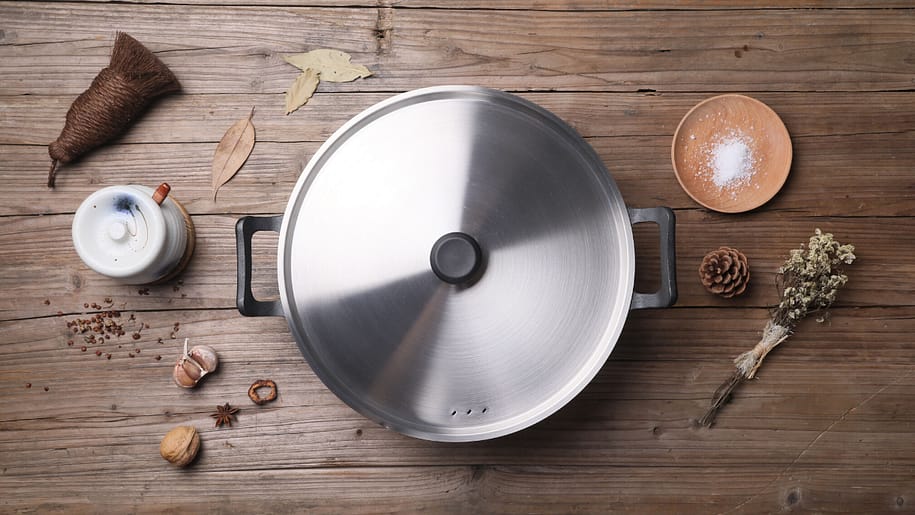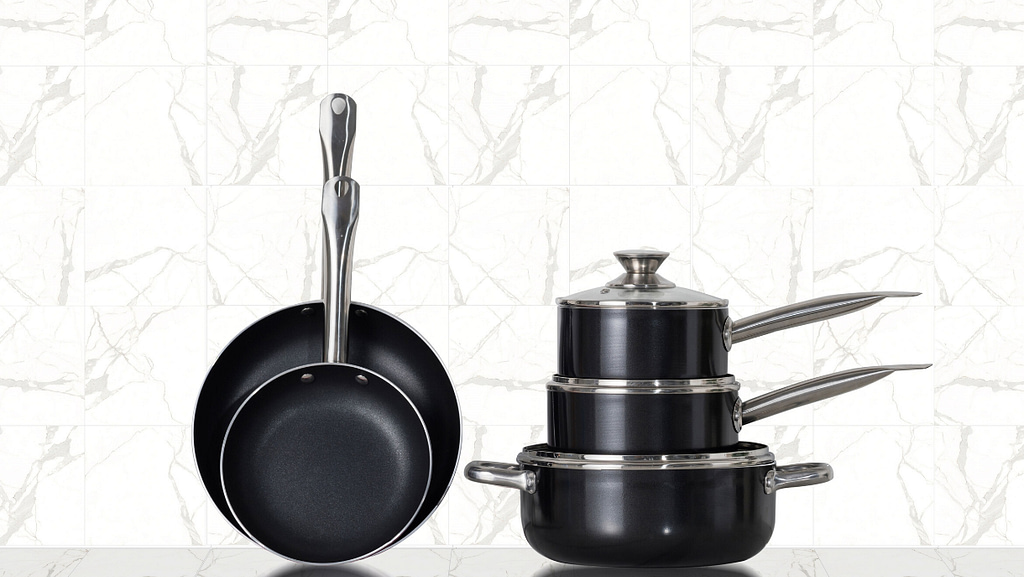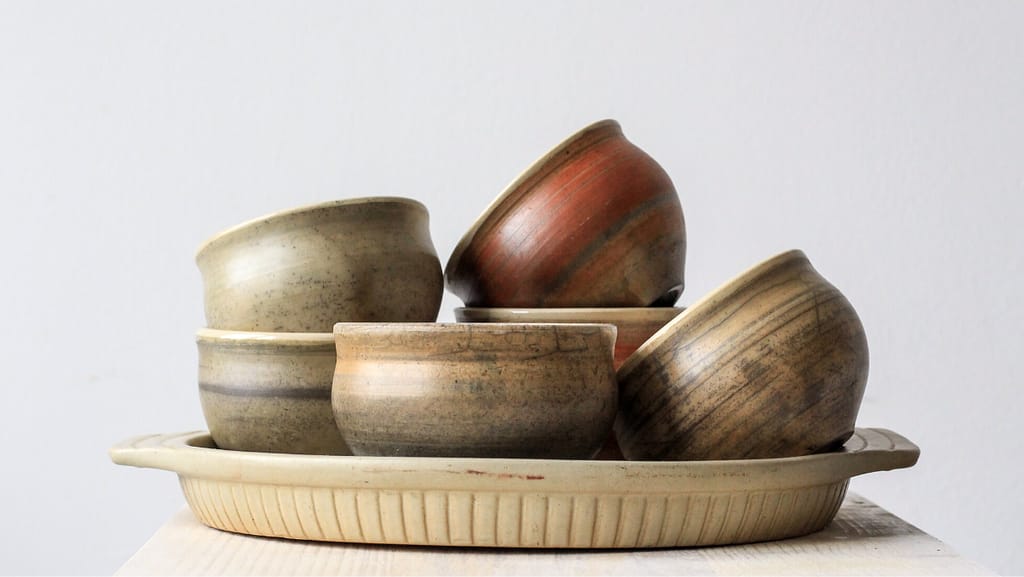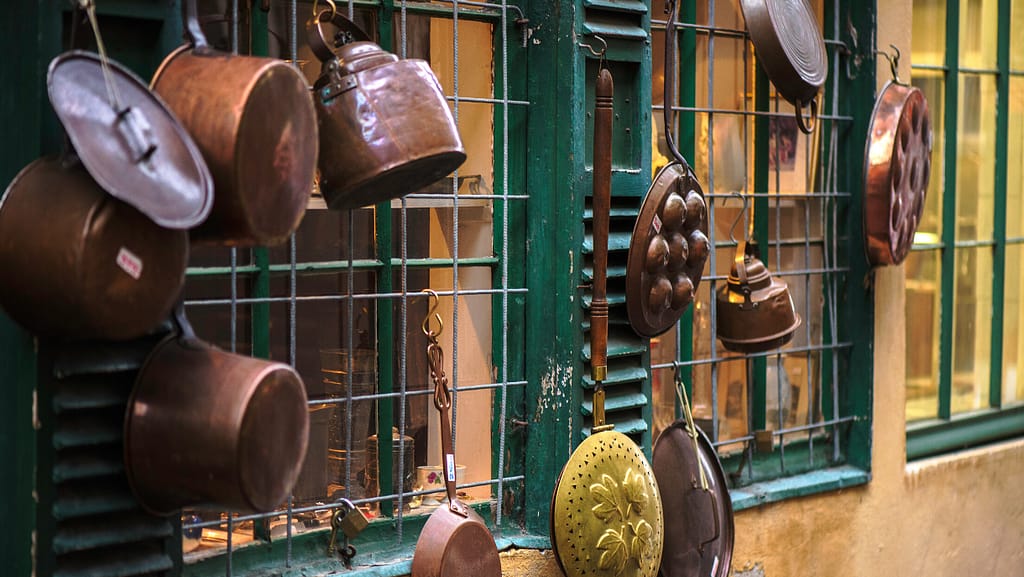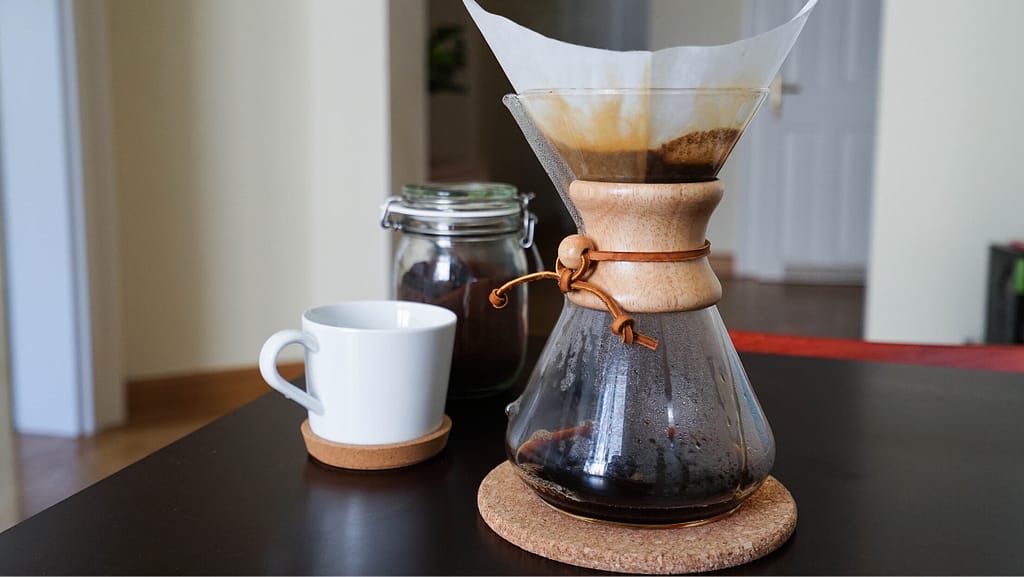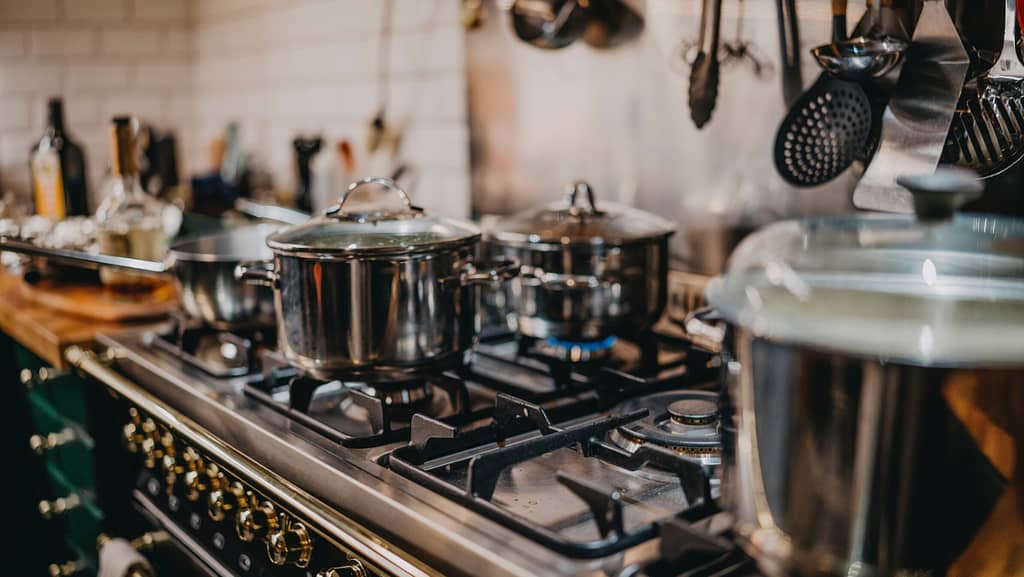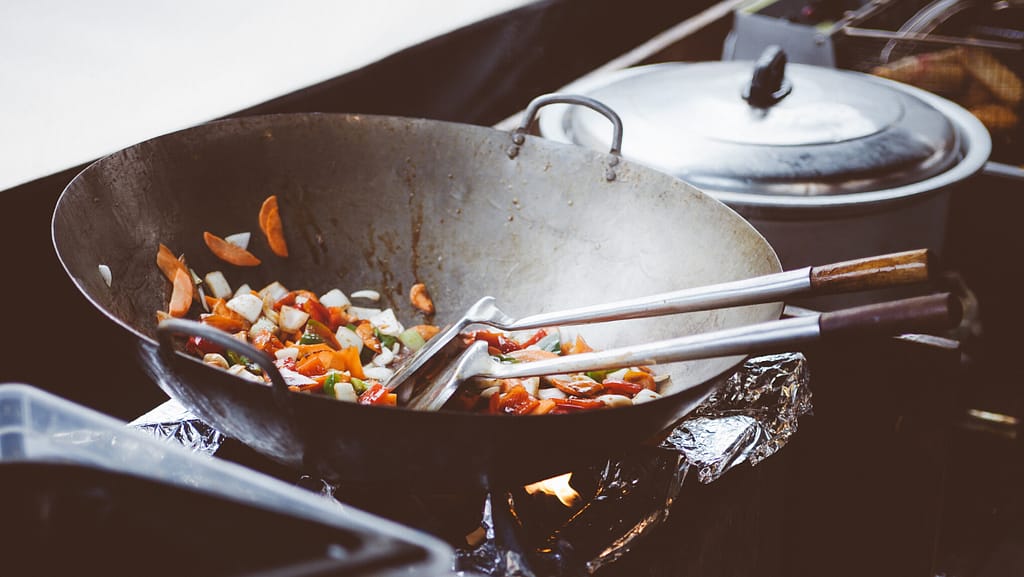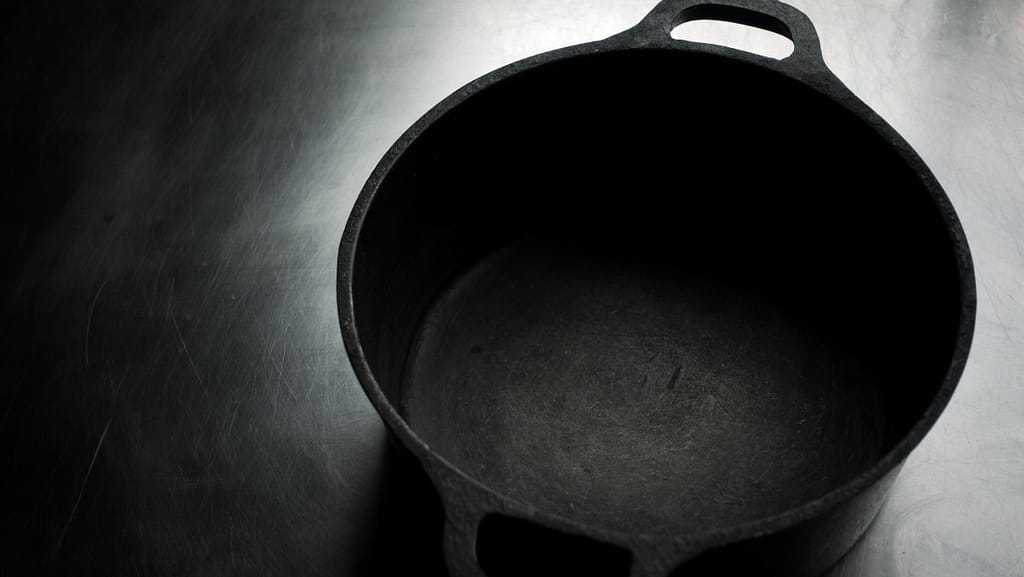How your cookware dangers are poisoning your family and what is your solution to it?
We have heard that specific food materials are good for health and there are some which are absolutely not. Same way are cookware dangers to be taken seriously at all?
How we cook food matters for health. And here we uncover a very critical fact – what you use for cooking your food, decides whether you are stirring health or toxins.
Want to know exactly what and why? Let’s uncover the threats, merits, and conditions of the cookware dangers and cookware benefits.
Why health matters with cookware?
Why understanding cookware dangers matters so much – because even after buying the best food products and cooking it in the very right way, you would only serve toxic or unhealthy food to your family if you are not having the cookware made of the right material.
The team Hous Of Life’s recently analyzed 8 of the most popular types of cookware globally.
Our goal?
To find out which are the Most Healthy Cooking Substances for Kitchen?
Here we start them from the worst to best.
1. Nonstick cookware (Cookware dangers score = 10)
More than 90% of the urban Indian homes use the best non-stick pan and cookware obviously because it is very convenient to use but did you know that it is also the most dangerous so much so that once a German man had sued a non-stick cookware company because the toxic fume produced from it killed his parrots.
You surely might think – “are non stick cookware safe?”
Most and the best non-stick pan and cookware is coated with a material called Poly tetra fluoro ethylene (PTFE), a plastic polymer also known as Teflon. When you cook in Teflon and you see that smoke coming out of the pan if you were to trap that smoke and have it lab tested you would find so many toxic chemicals in it including heavy metals like mercury and cadmium These toxic fumes have been proven to do serious damage to the body especially to the brain and lungs.
Teflon coatings on nonstick cookware start to break down at temperatures above 570°F (300°C), releasing toxic chemicals into the air.
Inhaling these fumes may lead to polymer fume fever, also known as the Teflon flu. It contains symptoms such as chills, fever, headache, and body aches.
Another concern is that whenever we cook food, a small layer of Teflon coating is leached into our food.
What is PFOA and why is it poison in your kitchen?
PFOA (perfluorooctanoic acid) is a chemical that was previously used to manufacture Teflon. It has been linked to health conditions such as thyroid disorders, chronic kidney disease, liver disease, and testicular cancer. It has also been linked to infertility and low birth weight.
Although all Teflon products have been PFOA-free since 2013, still PFOA is found in some cheap brands in India which is life-threatening as it tends to stay in the body for long.
What’s more, PFOA was found in the blood of more than 98% of people who took part in the US 1999–2000 National Health and Nutrition Examination Survey (NHANES)
Basically, if you’re looking for a Healthy lifestyle nonstick cookware should not enter your kitchen you need not wait till they chip off, just replace them right away.
And when non-stick cookware is banned in so many homes already, and when you know the reasons why you must without any single thought must ban them from your kitchen and life, right away.
2. Aluminum Cookware (Cookware dangers score = 8)
The aluminum cookware rose to fame because it is abundantly available, cheap, strong, lightweight, rust-free, versatile, good thermal conductor, and recyclable.
Today Aluminium has become the most commonly used commercial cooking utensil by far, and unfortunately Aluminium is toxic for your health.
The problem is that when we cook in an aluminum vessel it slowly leaches into the food.
Food cooked in aluminum vessels or in aluminum foil can absorb aluminum because aluminum dissolves into food and water during the cooking process.
In fact, you can do an experiment – buy a new aluminum vessel And weigh it. Start using it for daily cooking and after 3 years weigh it again you will find a considerable decrease in the weight of the vessel.
This is because most of the aluminum enters the food which was cooked in it.
What aluminum does to your health and body?
Aluminum is a thyrotoxic metal that gets deposited in the body. Today doctors apprehend that the upward surge in thyroid cases could be the excessive use of aluminum utensils. Not only this, using aluminum vessels for cooking leads to serious complications of the heart kidney, and brain as well.
This absorbed aluminum goes into the bloodstream and accumulates in different organs in different people causing a multitude of effects.
Some unpleasant effects of eating food cooked in aluminum are hyper-acidity, peptic ulcers, indigestion, flatulence, skin problems like pigmentation, eczema, dandruff and chronic inflammation of the intestine
Aluminum dissolves faster into acidic foods than into basic foods. It is always unwise to cook acidic foods like tomatoes, lemon, amchur powder, tea & coffee in aluminum vessels.
Scratches are formed when you wash it with steel wool and the food particles get stuck in those spaces which lead to bacterial growth.
Apart from all these health hazards, when you cook food in aluminum, due to its high heating prosperity, the food only retains less than 18% of its nutrients.
When served, your food is more poison than nutrition.
And if you are re-heating/ double cooking the same food, then, surely that’s not food that you are eating.
Again, when Aluminium cookware banned in Europe forever, then, why is it still existing in your kitchen? If it is not, then, you have saved your family from a definite slow poison.
3. Ceramic Coated Cookware (Cookware dangers score = 5)
I’m sure a question now hovering in your mind is – “is ceramic cookware safe?’
Yes, but no (conditions apply).
Ceramic technically means ‘clay that has been fire-hardened’. So when we talk of ceramic coated cookware, we are talking about some sort of metal (usually hard-anodized aluminum) that has been coated with a layer of ceramic.
Glazes are applied to ceramic cookware to give it a smooth, shiny finish that prevents moisture from entering the ceramic cookware. There have been reports of some ceramic glazes that leach lead or cadmium into food which is found to be toxic to human health.
Challenges with the Ceramic Cookware
Many difficulties can occur if they mix with the bloodstream. It can penetrate into the skin. The layer of ceramic gets cracked very quickly and after it gets cracked it starts mixing in your food.
Lead deposits build up in the human body and can pose serious health problems over time.
According to some studies, regular use of certain types of glazed ceramic cookware can cause lead poisoning and serious health problems in children. And that’s not what you want, right?
No doubt that pure ceramic cookware is one of the safest options for cooking and for serving purposes.
But the problem is – where to buy the pure ceramic cookware? And how to identify the pure ceramic cookware?
They are so hard to find and even if you find the pure ceramic cookware, they will burn a hole in your pockets.
If you really love ceramic cookware, you might ask “which is the best ceramic cookware?”
100% ceramic cookware is very durable and long-lasting. They are considered non-reactive and completely free of harmful substances.
Most so-called ceramic cookware in the market is not more than its coating over aluminum so do not waste your money on it.
4. Copper, Brass and Bronze Cookware (Cookware dangers score = 0)
Brass and bronze are made up of mixed elements.
All these three are good for cooking, you can cook in them. But these metals to leach in your food. Excess leach of these metals may not be healthy.
These three metals react with salt and acidic food when heated, leading to excessive leaching.
They are also not suitable for cooking with milk. Don’t let food sit in them for long. They require a lining for safe cooking which can’t be done easily.
Brass Cookware
Brass cookware is another great option. According to Indian tradition, brass utensils were re-tinned naturally before use.
When food is cooked in such brass utensils it retains almost 93% nutrients, aluminum, on the other hand, retains only 13 to 15 %of the nutrients.
The only downside of brass is that it needs a little more care while washing. Buy Pitambari powder for washing brass or you can use lemon and mud.
Bronze cookware, another alloy metal is commonly known as Kansa metal is best in this category.
It retains almost 97% nutrients it was widely used for cooking in India in yesteryears but unfortunately, it is not really seen in the market nowadays. If you can get it to go for it – might want to check if Hous Of Life’s bronze cookware stack makes any impression to you?
You can vouch on its authenticity and purity for sure.
5. Glassware (Cookware dangers score = 0)
The glass is a safe option and ideal for microwave cooking.
Glass is again amazing for serving purposes too.
It is free of chemicals and is safe for all foods as it does not react with acid foods such as tomatoes and it will not absorb anything.
Nothing leaches from the glass into your foods. It’s recyclable and ecological for the environment.
It’s healthy to use, easy to clean and I have much of it in my kitchen. Glass does not absorb food flavors or odors.
It is a one-dish method for cooking and can be stored in the refrigerator to warm up in the microwave. Some can be stored in the freezer.
Disadvantages of using Glass Cookware
The main disadvantage of glass cookware is it’s fairly low fracture toughness and intolerance to sudden changes in temperature. A sudden variation of temperature (thermal shock) causes the glass to expand or contract, which may result in breaking. That’s why it’s important to leave the frozen dish on the countertop until it’s at room temperature to heat up again.
Never put a hot dish or lid into cold water. Let it cool to room temperature before washing it or putting it into the dishwasher. The extreme temperature change can cause the glass to contract or expand resulting in breaking.
Although, glass does not retain as many nutrients in the food, as the bronze and brass do. But it surely retains way more nutrients than aluminum or non-stick cookware does.
So hands down, it is a way healthier and sexier option to choose over non-stick and aluminum cookware.
6. Stainless Steel Cookware (Cookware dangers score = 0)
Now you might be wondering “is stainless steel cookware safe?”, or “what is the best stainless steel cookware?”
100% stainless steel cookware is definitely a better choice.
Best for… anything really! stainless steel cookware is a great all-rounder, particularly useful for acidic foods such as tomato sauces or anything containing wine or vinegar.
Side-effects of using stainless steel cookware
Although it has hidden dangers too. You might have come across stainless steel cookware with copper bottoms, haven’t you?
No doubt copper is a good conductor of heat but it is generally not recommended for cooking as it tends to react with oils and acidic foods which may prove detrimental.
Also if the base of the steel vessel that you’re cooking in is thin you will face difficulties while cooking because the food will stick more often.
Certain stainless steel cookware has an excessive amount of Nickel to prevent it from rust and to provide extra shine.
It should be avoided as Nickel is a highly toxic metal.
The ratio of chromium to nickel decides the so-called grade of stainless steel cookware. So The ratio of chromium to Nickel has to be kept in mind.
Here, the first number represents the percentage of chromium while the second number represents nickel.
And the lesser the amount of Nickel the safer it is. Otherwise, Nickel can also get leached so that’s the side effect.
Again, identifying the right cookware made of genuine material is a great challenge.
7. Cast Iron Cookware (Cookware dangers score = 0)
Cast Iron certainly is heavier compared to the really thin pans and the weight does take a little time for getting used to.
However, I believe a good cast iron pan will make you proud for many years.
Cooking in cast iron skillet or cookware can naturally add iron into meals, supporting the daily requirements for the body’s needs.
So if iron gets leached into your food it is not bad for health.
If you cook in iron, it is conveniently the healthiest method of cooking. It’s a good conductor of heat. If you put it on high flame and then reduce it for cooking then it retains the heat for a long.
The in-convenience of using cast-iron cookware
You shouldn’t cook spinach and other acidic stuff.
Seasoning cast iron: Cast iron is very heavy and needs much care as it is prone to rust and if you are cooking in a rusted vessel you are allowing toxins to enter your body.
But if you are ready to take care of cast iron, then, it is definitely recommended, if you know how to season cast iron the right way.
Such care is a must!
Proud owners of bare cast iron should put a layer of seasoning on the cookware to protect the iron from rust and deterioration.
This seasoning also has non-stick properties making cleaning much easier. So whenever you buy iron cookware apply something sour to it like lemon or tamarind paste and after a day, when you wash it, wipe it nicely.
If you keep it wet then it might get rusted. After drying it you can apply a layering of coconut oil which will increase its life span and avoid the chances of rusting.
Once you know how to clean a cast-iron there is nothing that must stop you from adopting this healthier and noble cookware for your kitchen and family health.
Due to heavy demand for stainless steel, aluminum, and other convenient cookware, this beautiful and healthy craft-piece has lost its place from the commercial shelves, and if you want to try, Hous Of Life has some limited range from some loving and dedicated craftsman making their living out of it.
Get yourself the required health, replace as much with cast iron cookware.
8. Clay Pot / Earthen Pot Cookware (Cookware dangers score = 0)
Earthen clay pots are by far the most scientific and the healthiest cookware ever made for the human race.
The porosity and natural insulation properties of clay cause the heat and moisture to circulate evenly throughout the clay pots due to which there is hardly any nutrient loss.
Yes. It is only in the clay pot that you can retain 100% nutrients of the food. And because it is made from earth, its composition is exactly what is needed for the human body
Clay is filled with nutrients like magnesium and calcium, as opposed to toxins and chemicals like in the metal cookware. None of that will ever leach into your food if you use clay pots.
Having over 18 essential minerals in their right quantities clay pot is much better than any metal cookware in the market. Not only the food prepared in clay pots is the healthiest but also the tastiest.
The inconvenience with the earthen pot cookware
The only downside of the clay pot cooking that you might feel is that it cooks slowly.
If a curry prepared in a nonstick container takes 15 minutes, in a clay pot it would be prepared in 25 minutes.
In fact, that’s how food should be cooked – ‘slowly’.
Considering the more flavorful and nutritious dish that clay produces in the end, I think it’s totally worth the effort.
So if you want to ramp up your healthy lifestyle start using clay pots. And if you might get lucky, Hous Of Life might have some stock of these real beauty, because there are very limited craftsmen making these stuff with authentic clay and the right way. Check it out now.
Earthenware clay is usually glazed to make it shinier.
The glaze is a composition of different chemicals put together to form a ceramic paint which generates toxic fumes when heated.
Most glazes contain lead so avoid such glazed cookware because it is dangerous when leached into the food. All properties of clay pots are canceled out if the pot has been glazed.
Don’t wash clay pots with soap as it gets absorbed and will leach into your food.
.
.
.
Does leaching happen in cookware?
Leaching is one of the major safety concerns when it comes to cookware.
During the leaching process, some of the components used in the production of the cookware seep into the food being cooked.
Ingesting a small amount of metal used in making the cookware not only affects the taste of your food but has been linked to potential health risks.
A variety of health problems may arise as a result of the accumulation of ingested metals in body tissues.
How to Stay Healthy With The Cookware?
- To err on the side of caution when buying new cookware, study the label carefully. And confirm that the product is toxin-free before making a decision.
- Avoid purchasing ridiculously cheap cookware. Such cookware pieces are not very durable because their coating is thin and tends to degrade easier than the coating of comparable, more expensive products.
- Make sure that you purchase from a reputable company.
- Follow the directions for the proper use and maintenance.
- Discard cookware items that are chipped and have cracks on the interior surface.
Let us look at this way – if there is anything that requires a one-time investment. And helps you gain health and nutrition without ever spending money again. And also demanding additional effort, then, replacing the cookware made with the right material is probably the best immediate decision to make.
With a commitment to identifying and delivering only the most authentic, pure, and genuine products for your health, Hous Of Life is never going to let your health with this range of amazingly craft cookware for your maximum health benefit.
So when buying your next cookware, would you buy cookware dangers or the cookware benefits?



